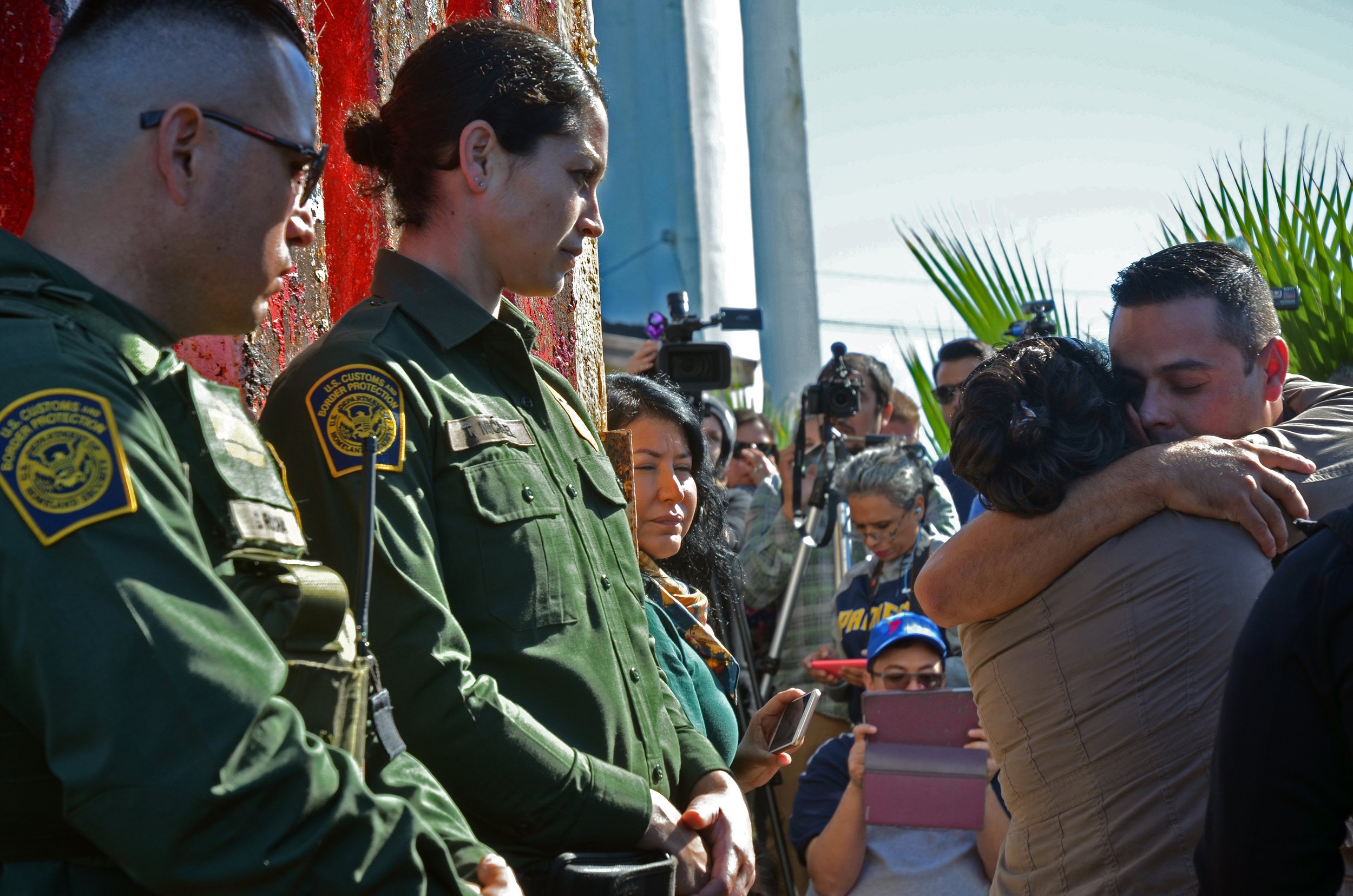Introducing the U.S.-Mexico Double Fix
Published: December 3, 2022
The Pacific Council has teamed up with the Conflict Awareness Project (CAP) to research the trafficking of U.S. guns to Mexico, part of a broader initiative to promote better collaboration between the two neighboring countries.
A husband and wife embrace after Border Patrol guards open a gate along the U.S. southwest border so families torn apart by deportation can spend a few minutes together as part of the “Door of Hope” program in November 2017. Photo by Tish Lampert
Why it’s important: In 2022, the U.S. and Mexico unveiled the “Bicentennial Framework for Security, Public Health, and Safe Communities, a bilateral security agreement that cites reducing gun trafficking as a major goal. The Pacific Council and CAP are uniquely positioned to bring resources and expertise to bear on this effort, which has major implications for the health and safety of people on both sides of the border:
It is estimated that each year, hundreds of thousands of guns are trafficked from the U.S. into Mexico, where they have fueled a crisis of historic proportions.
According to the Institute for Economics & Peace, between 2015 and 2021, more than 141,000 people were killed with a gun in Mexico, representing two-thirds of the more than 211,000 total homicides over that seven-year period. The rate of homicide with a firearm more than doubled, and the proportion of homicides committed with a firearm increased from 57.4 percent to 68 percent. As of 2021, Mexico’s homicide rate was about four times the murder rate in the U.S.
The violence precipitated by U.S. guns illegally flowing south has forced people from across Mexico and Central America to embark on the risky journey across the U.S.-Mexico border. U.S. Customs and Border Protection reported an all-time high of 2.4 million migrant encounters at the southwest border in fiscal year 2022. That marks a 143-percent increase from fiscal year 2019, when there were about 977,000 encounters. Fiscal year 2022 also endured a record 853 migrant deaths along the U.S. southwest border, far exceeding the previous record of 546 migrant deaths reported in fiscal year 2021.
Despite the U.S. and Mexico having much to gain by working together on these interrelated issues, security cooperation between them has been declining for years, seriously undermining their ability to combat gun trafficking and achieve other goals laid out in the Bicentennial Framework.
A cross reading “No Mas Muertes” (No More Deaths) marks an unknown grave site in Terrace Park Cemetery in Holtville, California. The cemetery holds the remains of hundreds of unidentified migrants who died while making the treacherous journey from Mexico. Photo by Tish Lampert
The project’s objectives: As part of the U.S.-Mexico Security Cooperation Project, the Pacific Council and CAP will be producing data and analyses on gun trafficking and its relationship to transnational criminal organizations, corruption, armed violence, and migration. The research team will build a case for greater cooperation on anti-gun trafficking efforts and make recommendations to the U.S. and Mexican governments as well as civil society actors. Ultimately, the project is aimed at fostering public awareness, facilitating expert dialogue, and educating policymakers in hopes of improving the lives of people living in both countries. The team plans on sharing insights and research updates here on the U.S.-Mexico Double Fix.
The broader context:The U.S.-Mexico Security Cooperation Project is an effort under the Pacific Council’s Mexico Initiative, which is focused not only on improving the U.S.-Mexico security relationship but also identifying other key areas for impact, such as subnational diplomacy, food and water security, and increasing personal and institutional connectedness.

